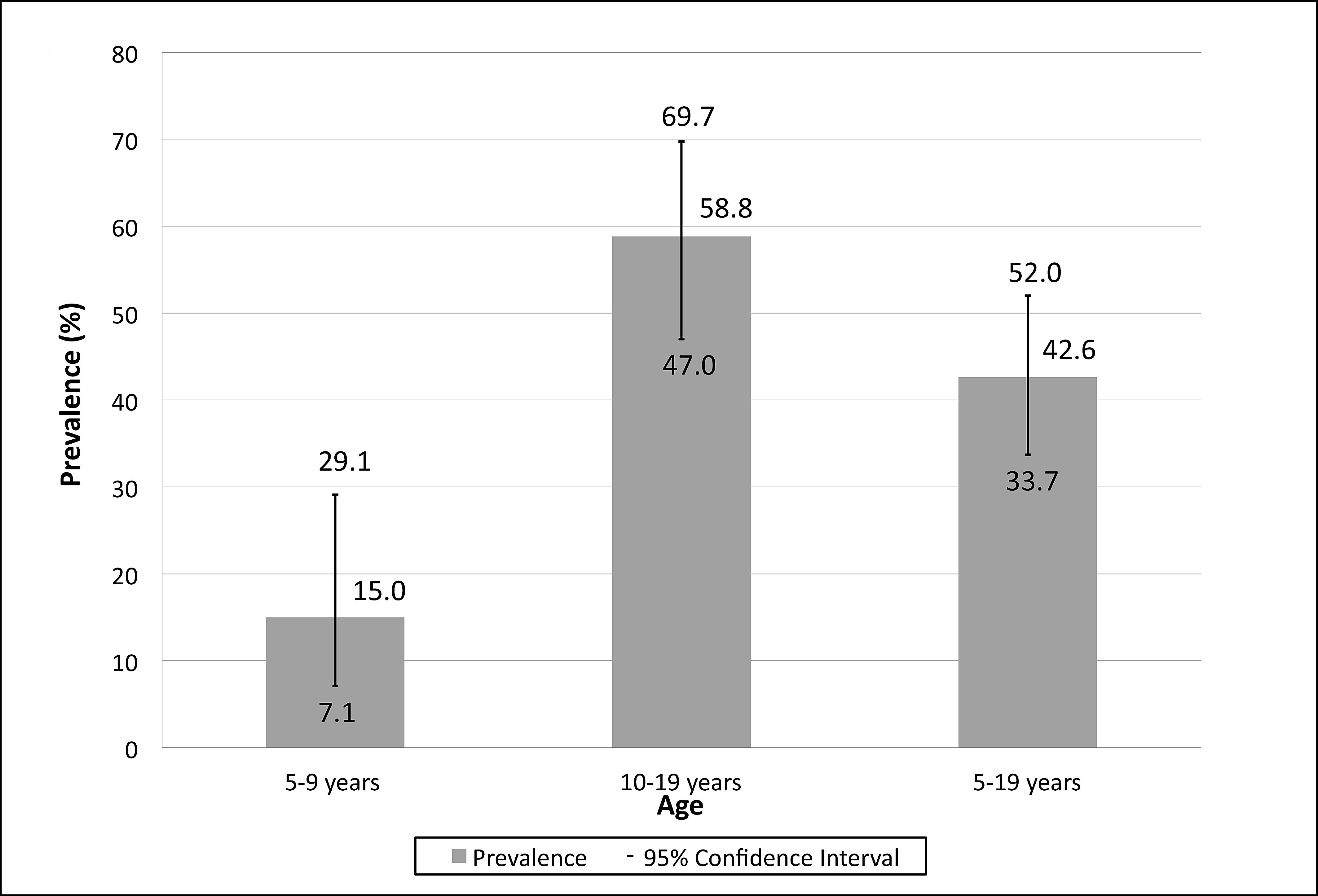Background
Rural populations present an elevated risk of exposure to hepatitis A virus.
Objective
The objective of this study was to estimate the prevalence and risk factors associated with hepatitis A virus infection among residents of rural settlement projects of southwest Goiás, Central Brazil.
Methods
A total of 466 residents were interviewed and tested for the detection of anti- hepatitis A virus antibodies by ELISA.
Results
The global prevalence of anti- hepatitis A virus was 82.2%. In individuals aged 5-9 years and 10-19 years, the prevalence was 15% and 58.8%, respectively. Persons in the 10-19 age group, with a history of life in encampments, with more than five people per residence consuming well water, were predictors for exposure to hepatitis A virus.
Conclusion
Our results suggest that the hepatitis A virus endemicity in rural settlements in southwest Goiás similar to that found in the urban population of the Midwest Region, confirming the implementation of universal hepatitis A vaccination in children.
Hepatitis A; Prevalence; Squatter settlements

